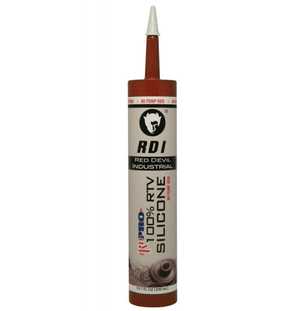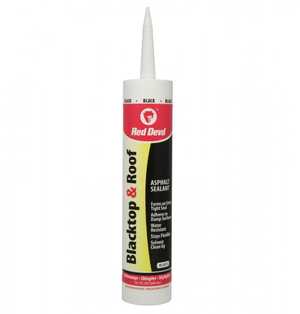ASTM C920
Standard Specification for Elastomeric Joint Sealants
Last updated: November 6, 2025
Overview
ASTM C920 is the primary performance standard for elastomeric joint sealants used in building construction. It establishes minimum requirements for sealant movement capability, adhesion, weathering resistance, and application properties.
This standard applies to all one-part and multi-part sealants including silicone, polyurethane, polysulfide, and hybrid formulations. C920 uses a four-part classification system: Type-Grade-Class-Use.
Why C920 matters: Specifying a sealant that meets C920 ensures tested performance. Generic "caulk" products may not meet movement requirements, leading to premature failure. Always specify the full classification.
Classification System
ASTM C920 uses a four-part designation system that describes the sealant's properties:
| Category | Options | Meaning |
|---|---|---|
| Type | S or M | Single-component or Multi-component |
| Grade | P or NS | Pourable (self-leveling) or Non-Sag (gun grade) |
| Class | 12.5, 25, 35, 50, 100, 100/50 | Movement capability in % ± (tension/compression) |
| Use | T, NT, I, M, A, O, G | Application type (traffic, non-traffic, immersed, etc.) |
Example Specification:
Type S, Grade NS, Class 25, Use NT
Translation: Single-component, non-sag (gun grade), ±25% movement, non-traffic application
Type: Components
Type S - Single Component
Ready to use from container. Cures by moisture from air (silicone, polyurethane) or evaporation of solvents (acrylic). Most common type for field applications.
- Advantages: No mixing, simpler application, longer working time
- Cure time: 24 hours to 7 days depending on depth and humidity
- Shelf life: 6-12 months unopened
- Examples: Most gun-grade silicones and polyurethanes
Type M - Multi-Component
Requires mixing of two or more components before use. Cures by chemical reaction between components. Used for fast cure or large volume applications.
- Advantages: Faster cure, deeper sections possible, consistent cure regardless of weather
- Cure time: 1 hour to 24 hours typical
- Working time: 5 minutes to 2 hours after mixing (pot life)
- Examples: Two-part polysulfide, epoxy, structural polyurethane
Grade: Consistency
Grade P - Pourable (Self-Leveling)
Low viscosity formulation that flows into horizontal joints and self-levels. Used for floor joints, plaza decks, parking structures.
- Application: Pour from container or pump
- Joint orientation: Horizontal only (will slump on vertical)
- Tooling: Self-tools to smooth surface
- Typical uses: Concrete slab joints, plaza decks, horizontal expansion joints
Grade NS - Non-Sag (Gun Grade)
Higher viscosity formulation that maintains position on vertical and overhead surfaces. Most common grade for building envelope applications.
- Application: Caulking gun or bulk gun
- Joint orientation: Vertical, horizontal, overhead
- Tooling: Requires manual tooling to smooth
- Typical uses: Window perimeters, wall joints, curtain wall, vertical expansion joints
Class: Movement Capability
Class defines the sealant's ability to accommodate joint movement without failure. Higher class numbers indicate greater movement capability.
| Class | Movement | Typical Applications | Common Chemistry |
|---|---|---|---|
| 12.5 | ±12.5% | Interior trim, low-movement joints | Acrylic latex |
| 25 | ±25% | Most expansion joints, window perimeters | Polyurethane, silicone |
| 35 | ±35% | Intermediate movement, special applications | Silicone, advanced polyurethane |
| 50 | ±50% | High-movement joints, curtain walls, glazing | Silicone |
| 100 | +100% / -50% | Very high movement, special conditions | Specialty silicone |
| 100/50 | +100% / -50% | Same as Class 100 (alternative designation) | Specialty silicone |
Critical: Joint movement must be calculated based on temperature range, material coefficient of expansion, and joint width. Using Class 25 sealant in a joint requiring ±50% movement guarantees failure. When in doubt, specify higher class.
Use: Application Type
Use classification defines the environment and loading conditions the sealant will encounter.
| Use Code | Description | Typical Applications |
|---|---|---|
| T | Traffic | Parking garage joints, pedestrian plazas, horizontal joints with vehicular or foot traffic |
| NT | Non-Traffic | Vertical wall joints, building envelope, non-trafficked horizontal joints |
| I | Immersed | Underwater applications, reservoirs, fountains, swimming pools |
| M | Metal | Metal-to-metal joints, metal panel systems, metal curtain wall |
| A | Adhesion | Special adhesion requirements, difficult substrates |
| O | Other | Applications not covered by standard use categories |
| G | Glazing | Glass-to-frame sealing, curtain wall glazing, window systems |
Multiple use designations can be combined. Example: Type S, Grade P, Class 25, Use T + I = single-component, self-leveling, ±25% movement, suitable for both traffic and immersed conditions.
Testing Requirements
ASTM C920 requires sealants to pass multiple performance tests before classification:
Core Performance Tests
- Adhesion-in-peel: Measures bond strength to substrates (concrete, glass, metal, masonry)
- Extension-compression cycling: Tests movement capability at specified class level
- Weathering resistance: UV exposure, water immersion, temperature cycling
- Hardness (ASTM C661): Shore A hardness typically 20-50 for building sealants
- Stain resistance: Ensures sealant won't discolor porous substrates
- Tack-free time: Measures time until surface can be touched without transfer
Additional Requirements by Use
Use T (Traffic): Abrasion resistance, indentation resistance, durability under wheel loads
Use I (Immersed): Extended water immersion testing, no extraction of plasticizers or oils
Use G (Glazing): Additional adhesion testing to glass, compatibility with insulating glass edge seals
Quality assurance: Request manufacturer test reports verifying C920 compliance. Reports should specify tested substrates, test conditions, and results. Generic "meets C920" claims without documentation are not sufficient for critical applications.
Selection Guide
Select the appropriate C920 classification based on your application:
| Application | Recommended Classification |
|---|---|
| Concrete expansion joints (horizontal) | Type S, Grade P, Class 25, Use NT (or T if traffic area) |
| Concrete expansion joints (vertical) | Type S, Grade NS, Class 25, Use NT |
| Window/door perimeters | Type S, Grade NS, Class 25, Use NT |
| Curtain wall joints | Type S, Grade NS, Class 50, Use NT |
| Glazing (glass to frame) | Type S, Grade NS, Class 50, Use G |
| Metal panel joints | Type S, Grade NS, Class 50, Use M |
| Parking garage floor joints | Type S, Grade P, Class 25, Use T |
| Interior trim/molding | Type S, Grade NS, Class 12.5, Use NT |
| Pool/fountain joints | Type S, Grade P or NS, Class 25, Use I |
Common Specifications
General Purpose Building Sealant:
"Sealant shall be one-part, moisture-cure, elastomeric sealant conforming to ASTM C920, Type S, Grade NS (non-sag), Class 25, Use NT. Color as selected by Architect. Primer as recommended by manufacturer."
High-Movement Curtain Wall:
"Sealant shall be one-part, neutral-cure silicone conforming to ASTM C920, Type S, Grade NS, Class 50, Use NT. Non-staining to porous substrates. Compatible with aluminum, glass, and stone without primer. Color: clear or as selected."
Traffic-Rated Horizontal Joints:
"Sealant shall be one-part, self-leveling polyurethane conforming to ASTM C920, Type S, Grade P, Class 25, Use T. Minimum hardness: Shore A 35. Suitable for vehicular traffic."
For detailed installation guidance and joint design, see: 2025 Sealant & Caulking Selection Guide
Frequently Asked Questions
What's the difference between ASTM C920 and C1184?
C920 covers weatherproofing sealants for general building applications. C1184 covers structural silicone sealant systems that carry structural loads in glazing systems. C1184 requires engineering calculations, quality control programs, and field testing. C920 sealants seal against weather - C1184 systems hold glass in place.
Can I use a Class 50 sealant where Class 25 is specified?
Yes. Higher class numbers provide greater movement capability. Class 50 exceeds the requirements of Class 25. However, verify the sealant meets other specification requirements (Use, Grade, chemistry, color). Cost may be higher for Class 50 products.
Does C920 compliance mean the sealant will work on my substrate?
C920 tests adhesion to standard substrates (concrete, glass, aluminum, mortar). Your specific substrate may require primer or may not be compatible. Review manufacturer test reports for tested substrates. For unusual substrates (EIFS, coated metals, plastics), request adhesion testing or conduct field mockups.
What's the difference between Class 50 and Class 100?
Class 50 provides ±50% movement (equal tension and compression). Class 100 provides +100% extension but only -50% compression. Class 100 sealants handle very large expansion but limited compression. Used for joints that open more than they close, or joints with asymmetric movement patterns.
Can I mix different sealant types in the same joint?
No. Never apply one sealant over another. Different chemistries are incompatible - silicone won't stick to polyurethane, polyurethane won't stick to acrylic. Remove all old sealant completely before applying new. Even sealants of the same chemistry from different manufacturers may not bond. Always remove to clean substrate.
How do I calculate required movement class for my joint?
Movement = (coefficient of thermal expansion) × (joint width) × (temperature range) × (safety factor). Example: Aluminum panel, 1/2" joint, -10°F to 120°F range, coefficient 0.0000128 in/in/°F: Movement = 0.0000128 × 0.5" × 130°F × 1.5 safety = 0.00125", or 0.25% of joint width. In this case, any C920 class would work. Wide joints and large temperature swings require higher classes.
Is primer always required?
Not always. Porous substrates (concrete block, split-face CMU, uncoated concrete) typically require primer. Dense, nonporous substrates (glass, aluminum, glazed tile) often don't. Manufacturer data sheets specify when primer is needed. When in doubt, conduct adhesion tests with and without primer. Using primer when not needed wastes money - skipping primer when needed guarantees adhesion failure.
What's the maximum joint width for gun-applied sealants?
Practical limit is 1" to 1-1/2" wide for most gun-grade sealants. Wider joints require multiple passes or foam backer rod of excessive size. For joints over 1-1/2", consider preformed joint seals, compression seals, or field-molded systems. Maximum depth is typically half the width (2:1 width-to-depth ratio) to prevent three-sided adhesion.
Can I use exterior sealant indoors?
Yes, with ventilation considerations. Exterior-grade sealants often have higher VOC content and stronger odor than interior products. Performance-wise, exterior products exceed interior requirements. However, for occupied spaces during cure, low-VOC interior-grade products may be preferable. Exterior products work fine for mechanical rooms, garages, warehouses.
What happens if I exceed the specified class movement?
Cohesive failure - the sealant tears down the middle. Both edges remain stuck to the substrate, but the sealant splits. This is permanent damage. The sealant must be removed and the joint redesigned (wider joint, higher class sealant, or reduced temperature range through building design). Band-aid repairs fail quickly.
ASTM C920 Compliant Sealants (2)
Was this resource helpful?
Your feedback helps us improve our technical resources and guides.

